

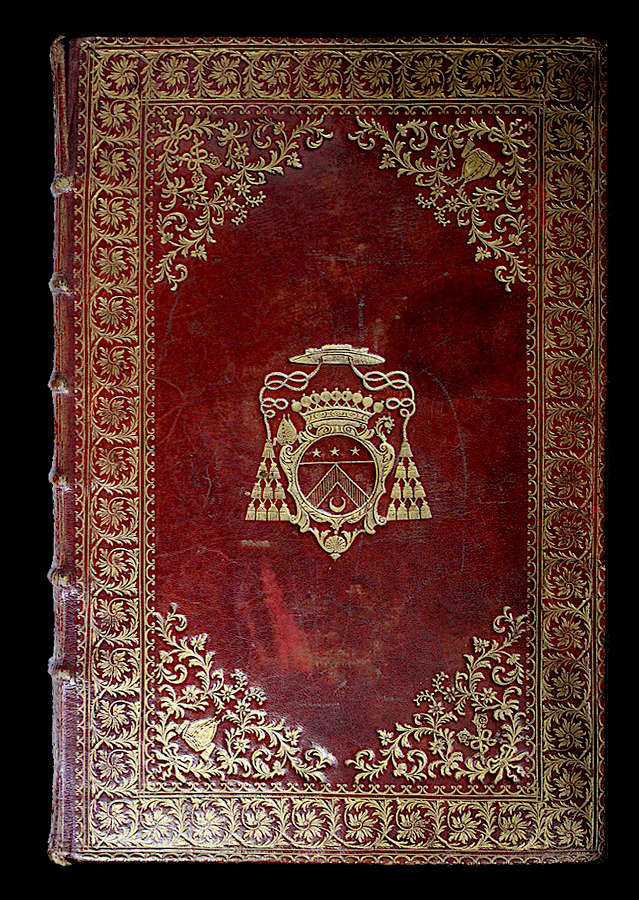
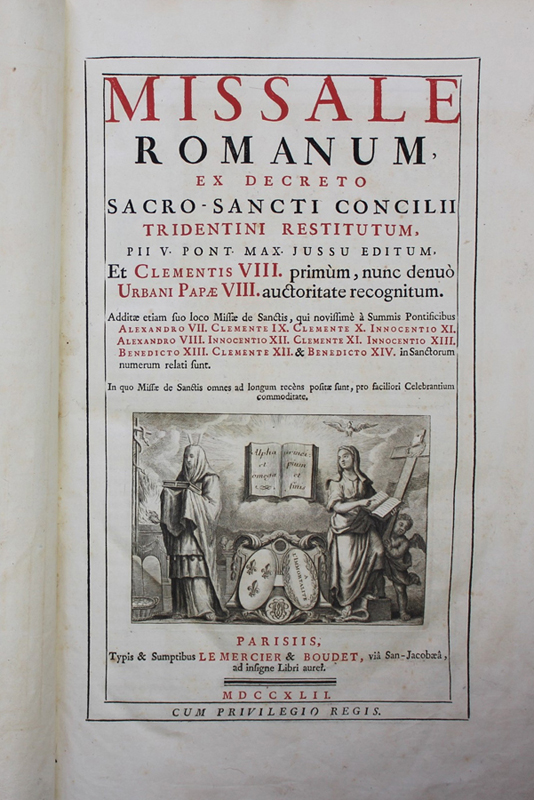

|
My decision to buy this magnificent folio binding that is covering a 1742 Missale Romanum, was based on a number of important issues. First and foremost was that this binding is very similar to another Delorme binding that I have documented previously (click here to see it). I now think, after researching Pierre Delorme's work very thoroughly, that he is one of the greatest French decorative bookbinders if not the greatest after Pierre-Paul Dubuisson, who he succeeded. Delorme surpassed the work of Derome le jeune by a country mile, especially considering that the majority of the mosaics attributed to Derome were actually executed by Delorme. A lot of money is paid for a binding that was supposedly the work of Derome le jeune, so what would a large folio binding in exceptional condition made by Pierre Delorme be worth? Personally I feel that each binding is a proper work of art in itself, and exceptionally rare compared to many of the books that they cover which are usually known by a multitude of examples, at least one copy in every major library in the world for example. Such is my logic for buying this exceptional work of art by one of the worlds greatest master craftsman of the 18th century. Now I asked myself how I could describe the features of this decorative work that has been executed with relatively few tools, the border or outer framework we can call a Scrolling Leaf Border (SLB) this has probably been created by the repeated use of a single tool that we can call SLBU Scrolling Leaf Border Unit. A similar linking design can be seen in the bordure de Louvre that Barber has called a wreath border produced by the repetition of an individual tool. Many dentelles have been made this way however usually they are made with much smaller tools. Here is a quote from the BnF about this... Ce style de bordure régulière, obtenue par la répétition d'un unique fer ou la combinaison de plusieurs fers auxquels sont adjoints points et, le cas écchéant, d'autres fers de très petite taille, a été apprécié surtout dans les années 1715-1745 (Barber 2013 , p. 201-202). This description is found in the information about a typical dentelle binding of this type (click here to see this). The BnF have not been able to identify this workshop however if they had of seen my pages on the mosaic bindings by Louis Douceur the would have discovered the same spine panel imprints on this page. |
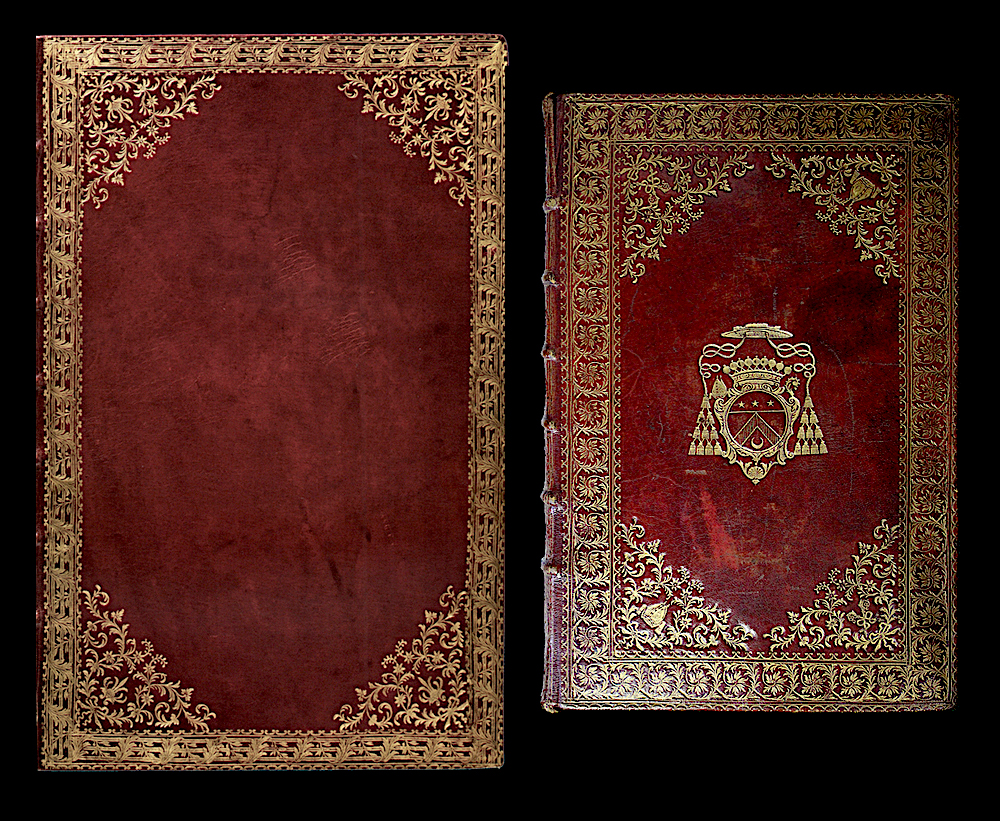
| In Comparative Diagram 1 we see the c. 1770 Delorme binding that I have detailed previously compared with our Missale Romanum, the the corners of these bindings have been created with a large plaque, and I wanted to show that these corner plaques are the same, this entailed a long process to resize and undistort the photographic reproduction of the c1770 binding. this was partially possible by the use of the the pd-63 imprint. |
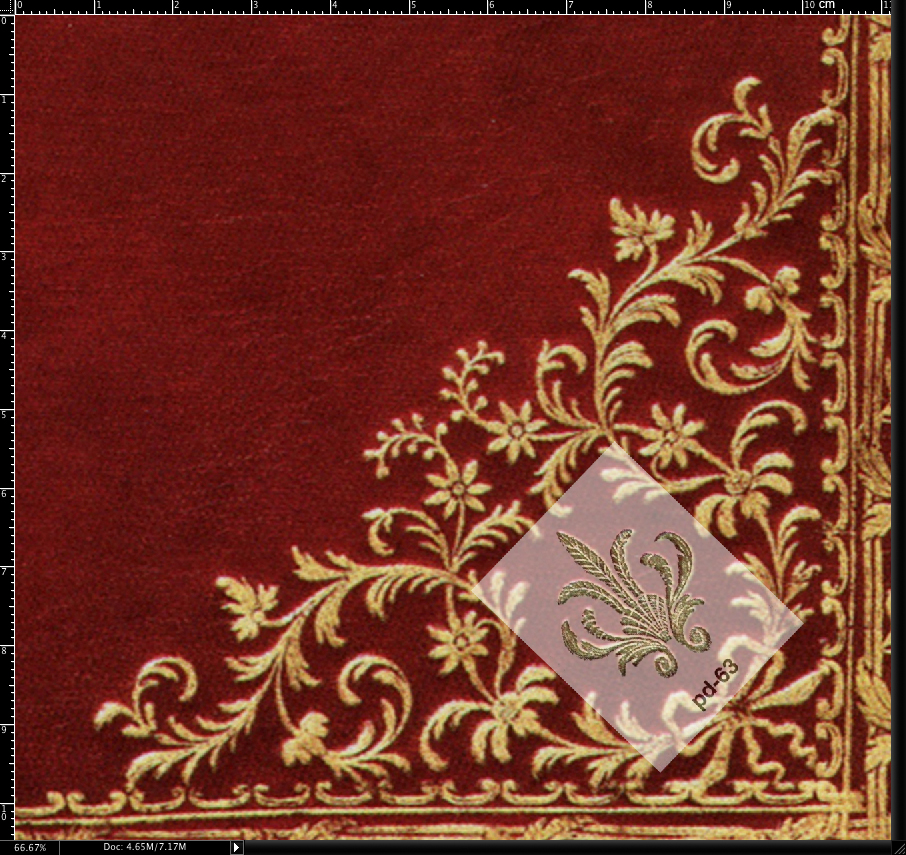
| In Comparative Diagram 2, we see the successful resize and undistorted result where the overlay of pd-63 matches this same imprint found in c.1770 corner. |
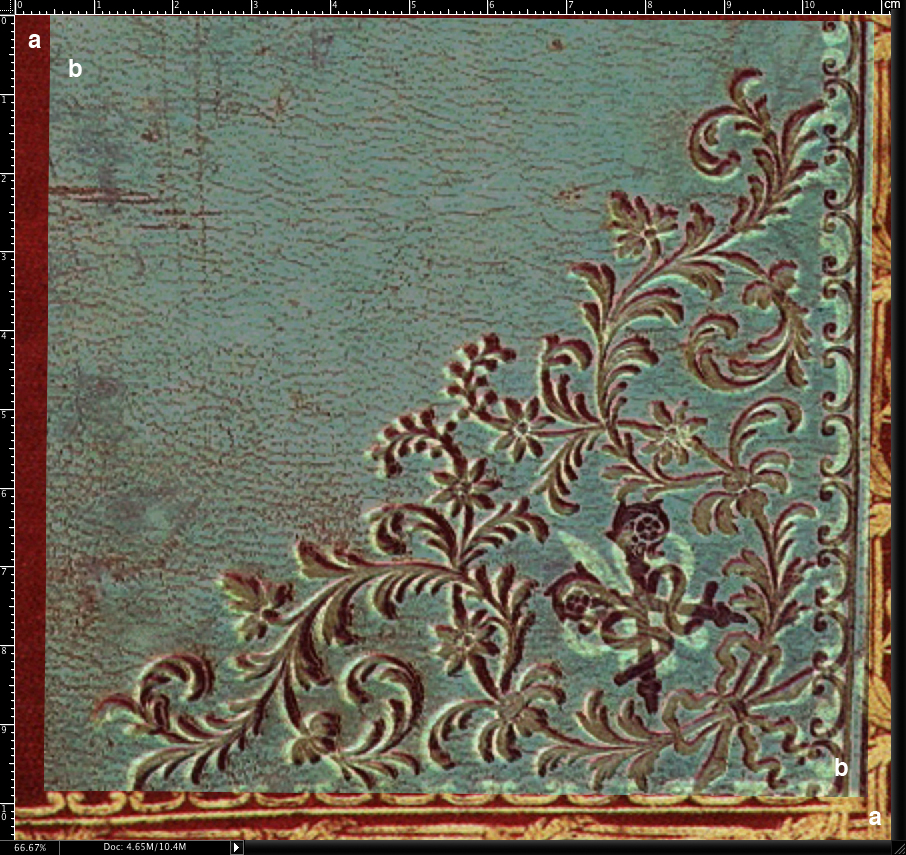
| In Comparative Diagram 3, we see an overlay of the Missale Romanum corner that has been placed over the c.1700 corner. I have separated the overlay slightly to show this better, however the Missale corner is also a photographic reproduction and somewhat distorted so that not all parts align perfectly, even so we see that there is a 99 percent chance that these corner imprints were made with the same plaque tool. The next binding I want to show you is from Catalogue XVI de la Librairie Sourget, 1997, item 73, page 172. |
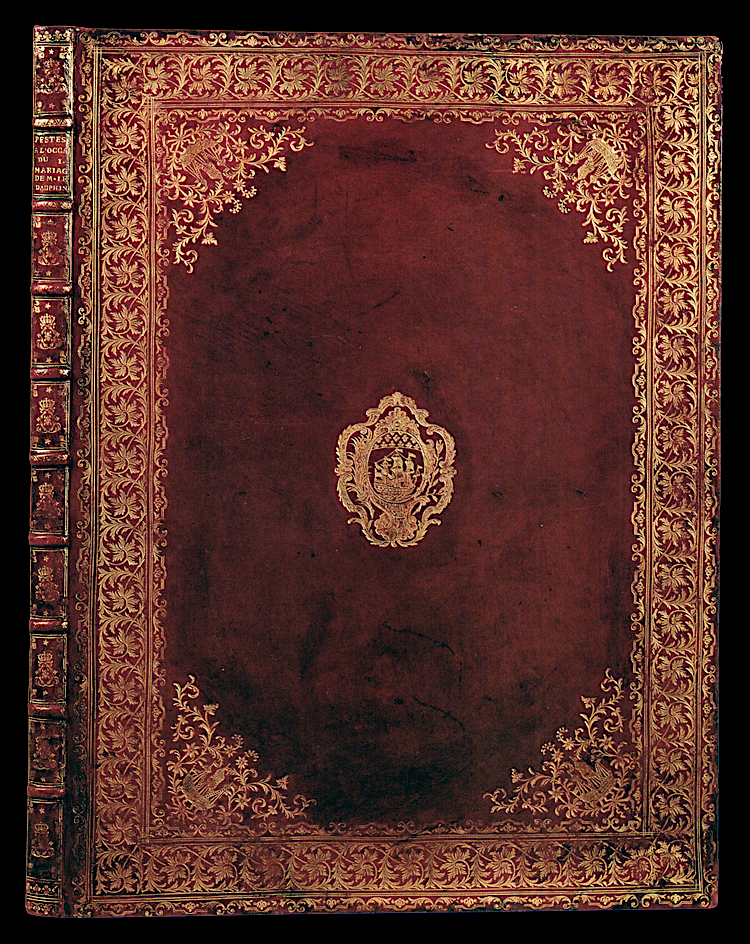
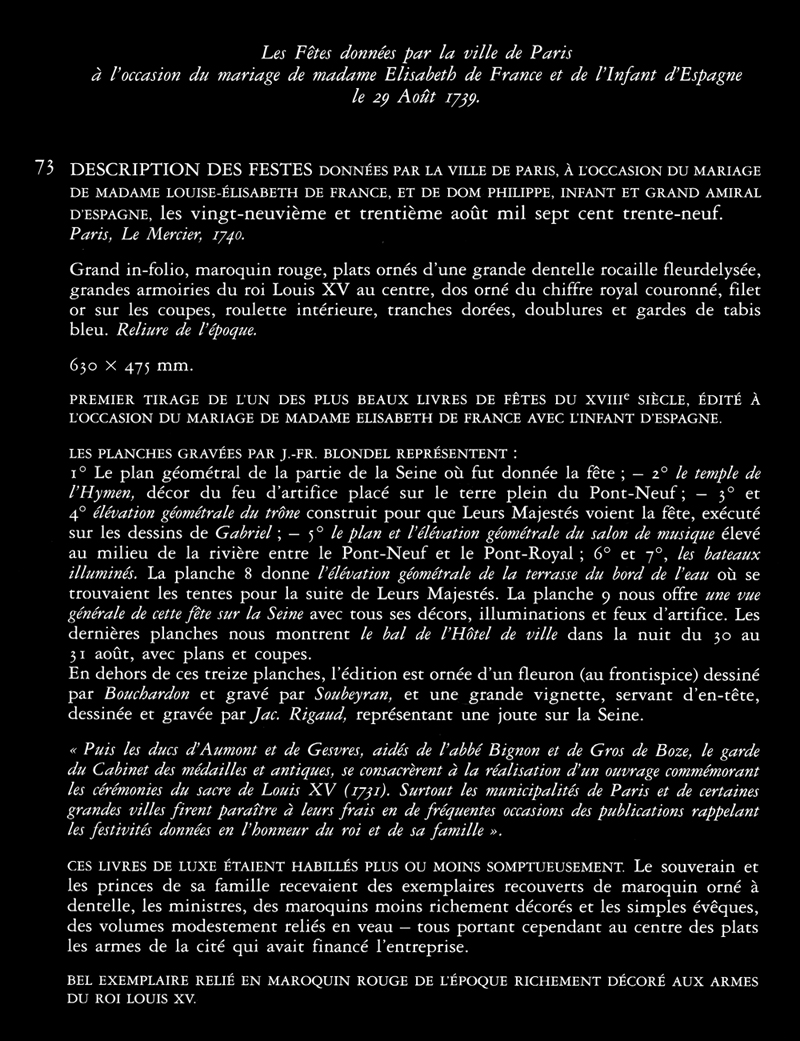
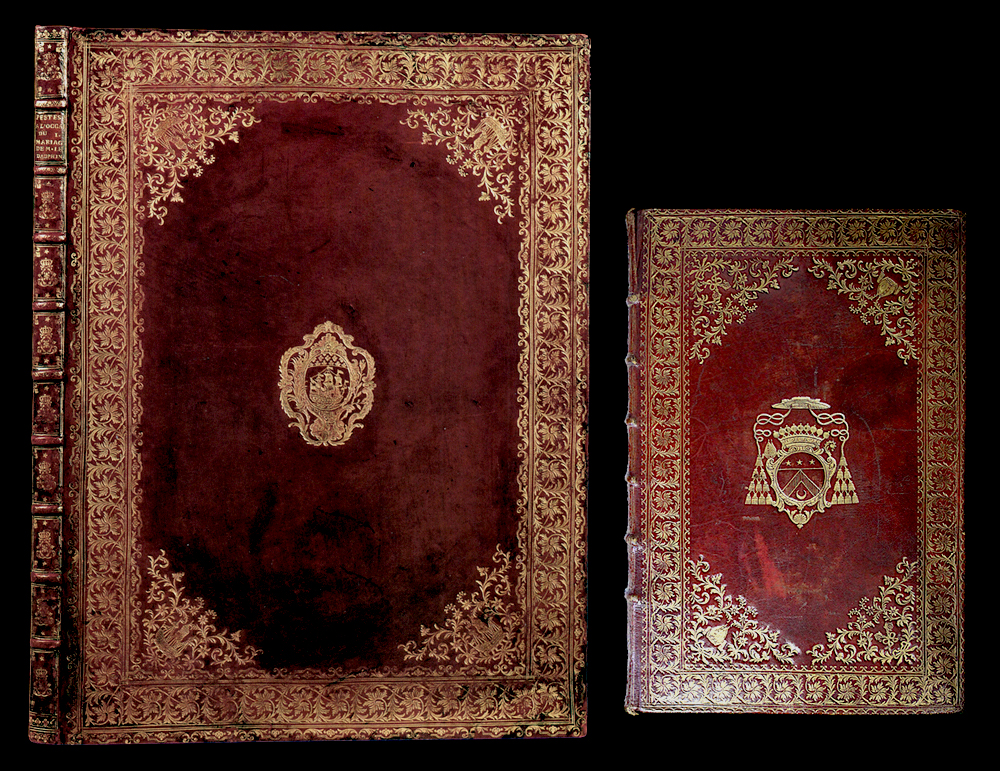
|
We see in Comparative Diagram 4 that these two bindings only look similar, however there is a significant difference in size, not only in the binding itself but also the SLB is not the same size as well as the plaque corners are a different size. First I want to point out that there is a strong possibility that Sourget item 73 binding was made shortly after the marriage of Marie Louise Élisabeth of France (Marie Louise Élisabeth; 14 August 1727 6 December 1759) who was a French princess. She was the eldest daughter of King Louis XV of France and Maria Leszczyska; and the elder twin of Anne Henriette de France. She married Infante Philip; the younger son of Philip V of Spain who inherited the Duchy of Parma from his mother in 1748. Thereafter, she founded the House of Bourbon-Parma. She functioned as the de facto ruler of the Duchy of Parma between 1748 and 1759. The twelve-year-old Élisabeth was married by proxy in Versailles on 26 August 1739, and thereafter known as Madame Infanta in France. When she left for Spain in September, the king was reportedly so moved that he entered her carriage and accompanied her for the first miles on her journey. She passed the border and met her nineteen-year-old husband some thirty kilometers northeast of Madrid, at Alcalá de Henares, where the marriage took place on 25 October 1739. This story although seemingly hard to believe is yet more remarkable in the fact that their first child was born in 1741 Isabella Maria Luisa Antonietta Ferdinanda Giuseppina Saveria Dominica Giovanna (17411763) who later married the Austrian emperor, Joseph II, queen Marie Antoinette's older brother. This book then is about the festivities leading up to the marriage and one would expect that it was bound and delivered not long after that. Although I have no proof, I show it as being c.1740. |
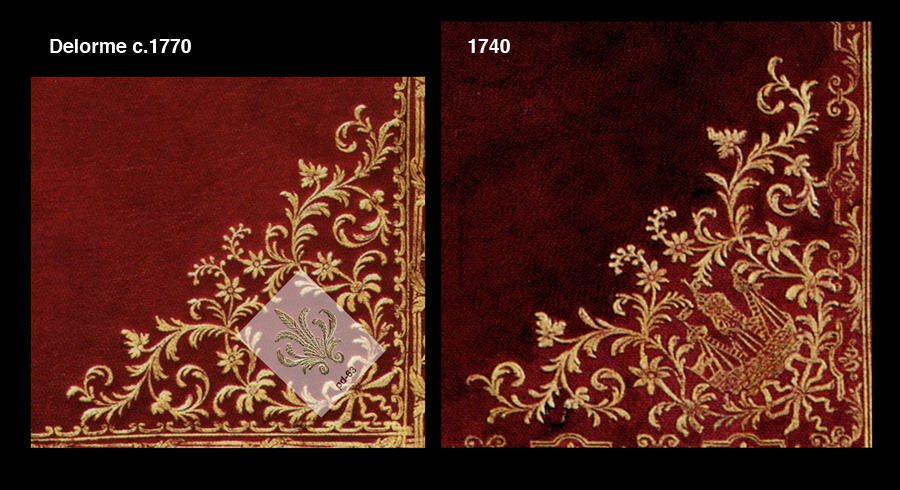
| In Comparative Diagram 5, we can see the difference in the size of these plaques, however the basic design of both is the same. |
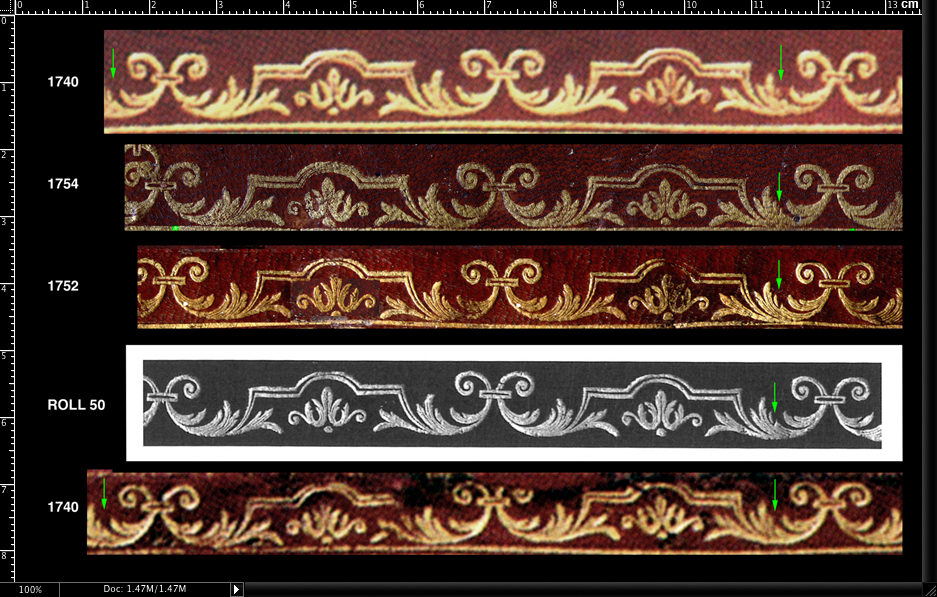
|
In Comparative Diagram 6 we discover something remarkable, I have compared these roulettes, (this is not really a roulette, but rather, I suspect it is a kind of palette) with Barber's ROLL 50 which he states is made of two units that repeat at 100 mm. I happened to buy, many years ago, some Dubuisson bindings and I have detailed them on another page (click here to see this) thus I was able to make some good scans of these Dubuisson imprints that I now show in this diagram. We can see that these imprints match Barber's ROLL 50, and now comparing those with the ones found on this 1740 binding, we discover that they are the same, therefore we know that Pierre-Paul Dubuisson or his father Rene had a hand in the creation of this binding. The interesting part is now to discover how it happened that Delorme was making almost identical bindings some 30 years later. |
|
click here to return to the HOME page. click here to see an INDEX of the 2017 pages. see below links to previous work |
| Even experts are sometimes wrong, before you spend thousands on a book, please do your own research! Just because I say a certain binding can be attributed to le Maitre isn't any kind of guarantee, don't take my word for it, go a step further and get your own proof. In these pages I have provided you with a way of doing just that. |
| Virtual Bookings, created by L. A. Miller | return to the Home page of VIRTUAL BOOKBINDINGS |